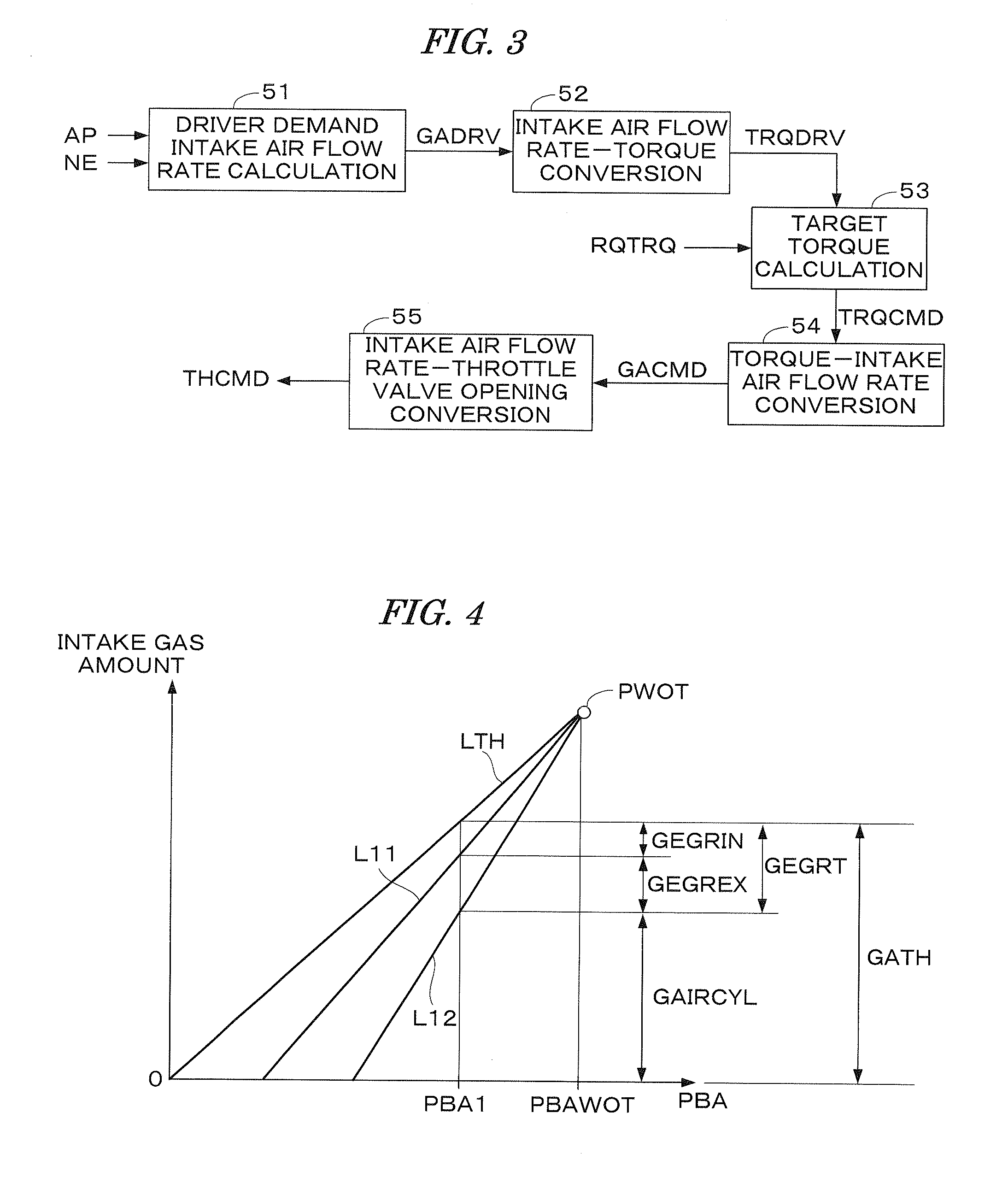Control system for internal combustion engine
a control system and internal combustion engine technology, applied in the direction of electrical control, process and machine control, instruments, etc., can solve the problem of large manpower required for setting tables or maps, and achieve the effect of accurate torque related parameters and simple methods
- Summary
- Abstract
- Description
- Claims
- Application Information
AI Technical Summary
Benefits of technology
Problems solved by technology
Method used
Image
Examples
modification 1
[0119]In the calculation in the intake air flow rate-torque conversion block 52 described above, an estimated output torque HTRQ of the engine 1 can be calculated by replacing the estimated intake pressure HPBA and the driver demand target intake air flow rate GADRV respectively with the detected intake pressure PBA and the detected intake air flow rate GAIR.
[0120]The calculated estimated output torque HTRQ is applicable to the traction control or the stabilization control of the vehicle driven by the engine 1.
[0121]According to this modification, it is not necessary to previously set many maps corresponding to various engine operating conditions, which makes it possible to accurately calculate the estimated engine output torque taking the exhaust gas recirculation ratio into account with a comparatively simple method. This modification corresponds to the invention recited in claim 2.
[0122]Further, the total EGR ratio REGRT may be calculated using an estimated intake air flow rate H...
modification 2
[0123]In the calculation of the torque-intake air flow rate conversion block 54, the temporary estimated intake pressure HPBATMP and the target torque TRQCMD may be replaced respectively with the detected intake pressure PBA and the detected output torque TRQDET. According to such modification, the estimated intake air flow rate (an estimate value of the actual intake air flow rate) HGAIR of the engine 1 can be calculated by performing the conversion calculation and setting the estimated intake air flow rate HGAIR to the temporary target intake air flow rate GACMDMID at the convergence time. The output torque of the engine 1 can be detected by a known torque sensor (shown in Japanese patent laid-open No. H05-26019 (Kokoku), for example).
[0124]By using the calculated estimated intake air flow rate HGAIR, the intake air flow rate sensor can be made unnecessary. When using the intake air flow rate sensor, the estimated intake air flow rate HGAIR can be applied to a failure determinatio...
PUM
 Login to View More
Login to View More Abstract
Description
Claims
Application Information
 Login to View More
Login to View More - R&D
- Intellectual Property
- Life Sciences
- Materials
- Tech Scout
- Unparalleled Data Quality
- Higher Quality Content
- 60% Fewer Hallucinations
Browse by: Latest US Patents, China's latest patents, Technical Efficacy Thesaurus, Application Domain, Technology Topic, Popular Technical Reports.
© 2025 PatSnap. All rights reserved.Legal|Privacy policy|Modern Slavery Act Transparency Statement|Sitemap|About US| Contact US: help@patsnap.com



